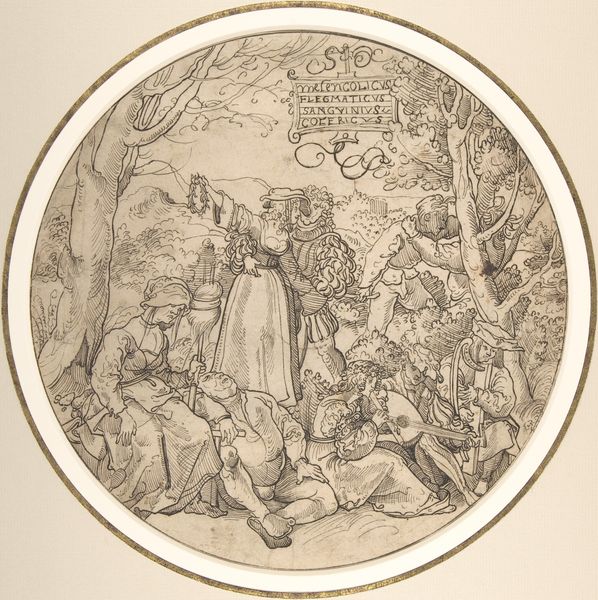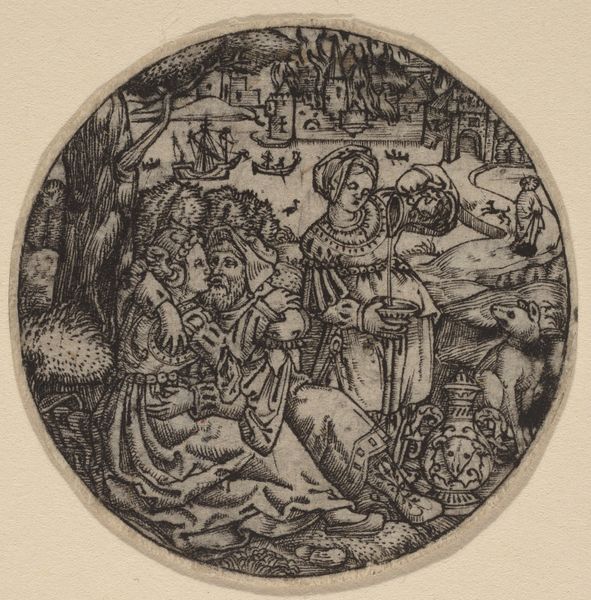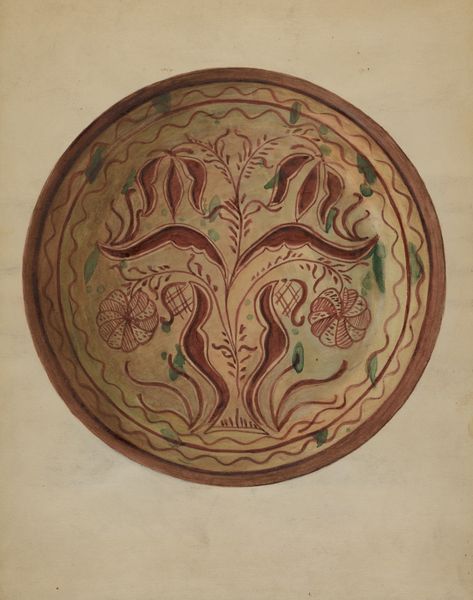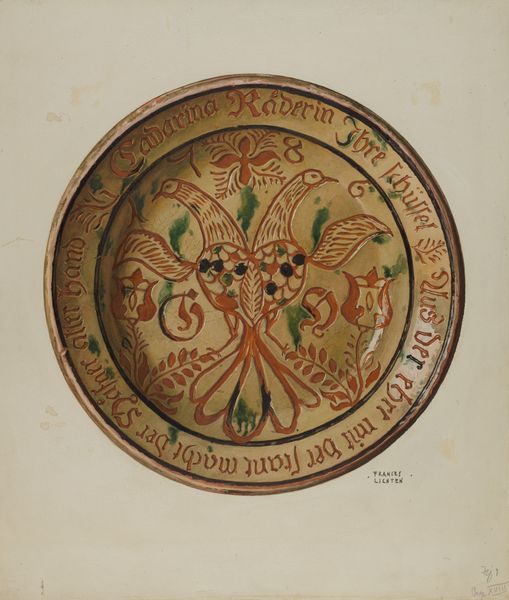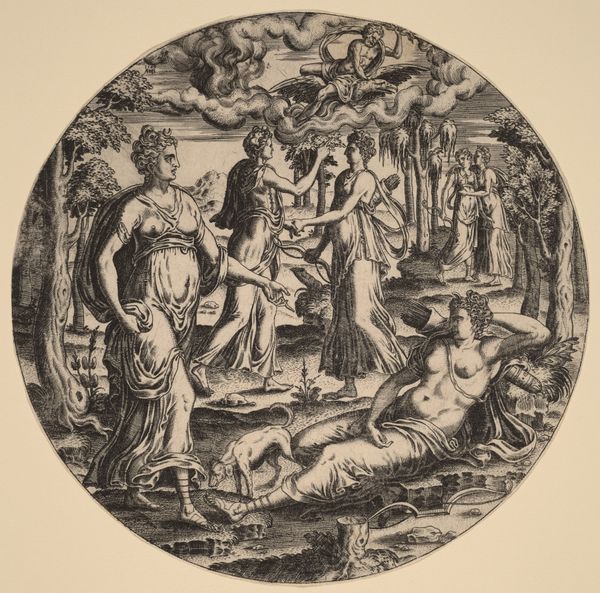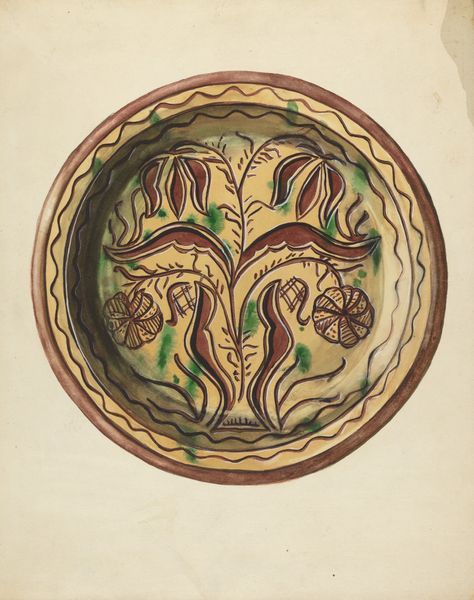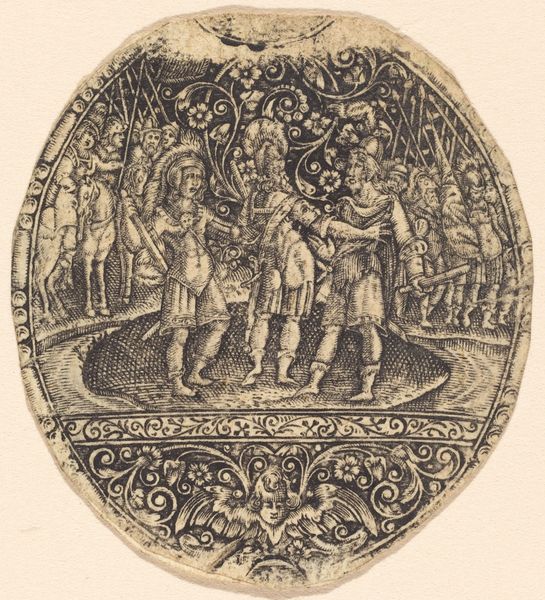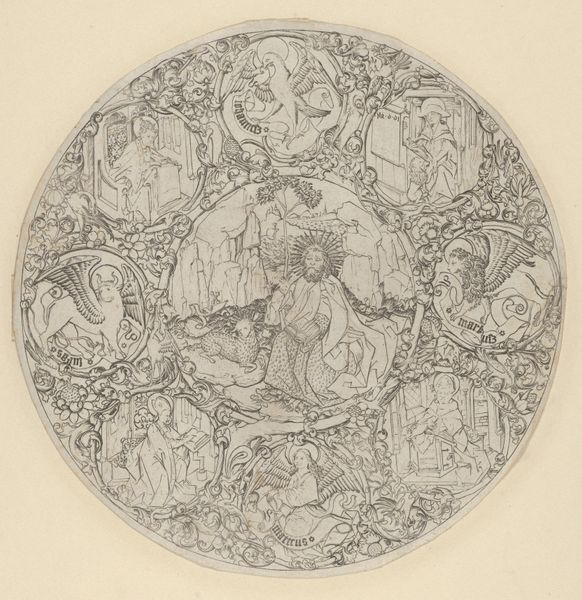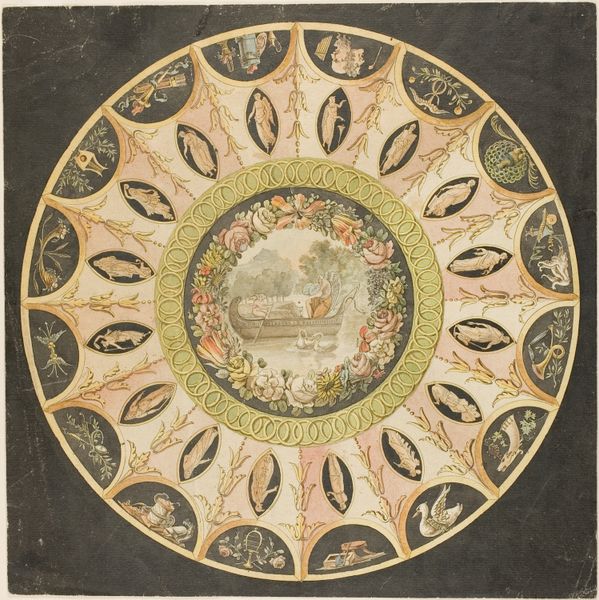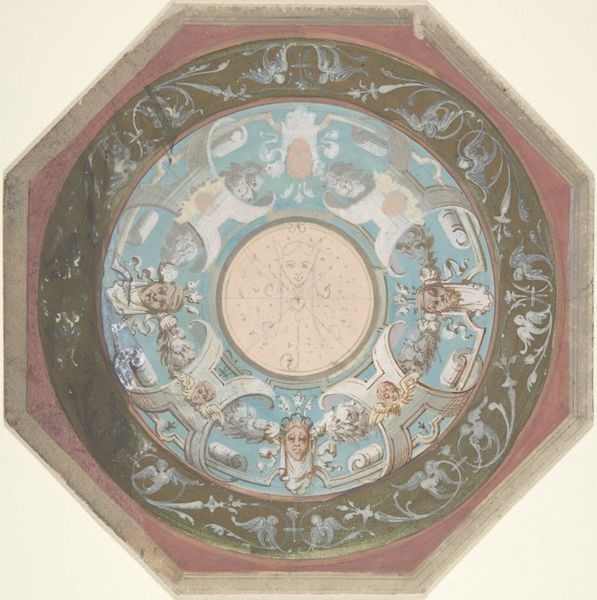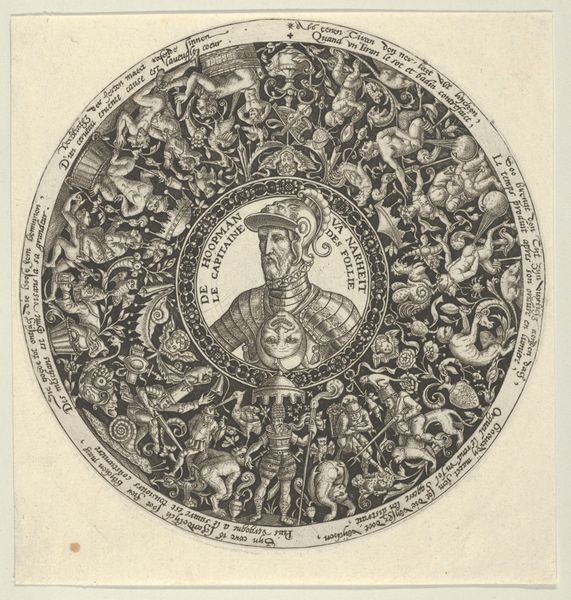
print, woodcut
#
medieval
#
allegory
#
pen drawing
# print
#
figuration
#
form
#
woodcut
#
line
#
northern-renaissance
Dimensions: diameter (trimmed within plate mark): 17.8 cm (7 in.)
Copyright: National Gallery of Art: CC0 1.0
Editor: This woodcut print, "Madonna in a Wreath of Roses," likely from between 1490 and 1500, is attributed to an anonymous artist. The intricate details of the rose wreath and the Madonna's figure are striking. How would you interpret this work through its historical lens? Curator: This piece really speaks to the evolving role of religious imagery and printmaking during the late medieval and early Renaissance period. Woodcuts, being relatively inexpensive, made images like this Madonna accessible to a broader audience. Consider its public function: What kind of devotional practices was it encouraging? Editor: It’s interesting you mention that. I hadn’t considered its widespread accessibility. Does that democratizing element change how we perceive its artistic value compared to, say, a commissioned painting for a wealthy patron? Curator: Absolutely. It reframes it. Think about the dissemination of ideas. The printing press allowed for the replication of not just texts, but images, impacting religious belief and potentially challenging the exclusivity of artistic patronage. It's a shift from art as a singular, unique object to art as a reproducible commodity with a potential political and social impact. What kind of power do you think an image like this holds for the common viewer? Editor: I suppose it becomes a sort of portable icon, reinforcing faith but also potentially shaping opinions and societal norms in subtle ways. Thank you. This discussion broadened my understanding of not only the art piece itself but how context deeply matters. Curator: Indeed. Understanding its place in a wider network of social and political currents really opens up a deeper appreciation.
Comments
No comments
Be the first to comment and join the conversation on the ultimate creative platform.

